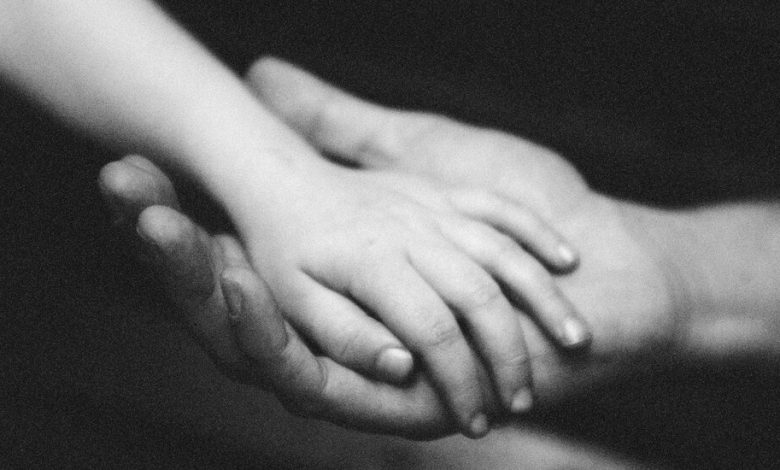What I Told My Daughter About War

There comes a point in every child’s life when he or she asks about war.
My 7-year-old daughter reached that milestone this week. “Are there wars happening right now?” she asked as we used a glue gun to build the Egyptian pyramids out of sugar cubes at our dining table.
I’m paid to think and write about conflicts and violence, but I was unprepared for my daughter’s question. Not the topic per se but rather a shared vocabulary to discuss it.
In 2023 you have to work hard not to be touched, however fleetingly, by a war. We live in one of the most peaceful periods in all of human history, yet conflicts in places like Ukraine and Israel have an unprecedented global reach and immediacy. How do you explain war to a child who doesn’t really know what a soldier is?
My daughter is young enough to believe that the journalists Peter Parker and Clark Kent work in my office but old enough to know that the adults around her have been talking about something serious for the past few days.
I took a second look at a tipsheet that her New York City elementary school had sent to parents, provided by the American Psychological Association.
“You may wonder how you can teach your child to move beyond the fears that a time of war brings,” the sheet read. “The good news is that, just as your child learns reading and writing, he or she can learn the skills of resilience — the ability to adapt well in the face of adversity, trauma, tragedy, threats or even significant sources of stress.”
That’s good guidance, but parents still need to translate it into a language kids can understand.
We know people here on both sides of the conflict there. Their children all learn to read and write in the same Manhattan classrooms. Ghastly images of mutilated bodies in Israel and blasted apartment complexes in Gaza are as close as a few swipes on the iPads they use for their homework. “Monitor your child’s internet usage to ensure that she isn’t going to sites that will give gory or sensationalized accounts of war,” the American Psychological Association warned.
To be young is to be afloat in a current of events that you cannot understand.
My first glimpse of war came through CNN, watching the bombardment of Baghdad in 1991 with a fascination and fear that I understood only later. My mother says that as a 10-year-old, I was very worried that the smart bombs were falling close to our home rather than half a world away. In my parents’ attic there is, to this day, a box of gulf war newspaper clippings that I dutifully collected as a child. Those clippings — mostly infographics, if I’m honest — were a textbook of sorts. When I went to Baghdad as an adult to cover the Iraq war, I had long known the names of nearly all the military vehicles and weapons that were being used.
To be old is to be afloat in a current of events that you fool yourself into thinking you understand.
“Yes, there are wars going on,” I told my daughter, as we set another tier of sugar cubes near a blue acrylic Nile. “Why do you ask?”
She said she’d heard something at school. “Are there children in the war?” she asked.
The closest my daughter has come to witnessing death was walking (obliviously) past the corpse of a homeless man on Second Avenue. I told her to look at the flashing lights of the police car rather than the bundle of blankets in the doorway.
The second graders in her class this year aren’t really aware that there are new students in their school who fled from war and violence, claiming asylum in the United States alongside thousands of others who are overwhelming the city’s shelter system. Nor do second graders understand that the safety exercises they now practice will, in later grades, be called by their real name: active shooter drills. “Tell children that they will be all right. Reassure them that they will be protected,” the war tipsheet suggested.
“There are children who are in the wars,” I said, “and I’m sure that they are all very scared.”
“I would be scared,” she said.
“But you don’t need to be scared right now,” I said. “The wars are very far away.”
In an interconnected world, proximity to wars is relative. Sowing fear and stoking support around the globe is one of the reasons that Hamas seeded graphic photos and videos of its surprise attack across the internet, The Times reported this week.
The worst may be yet to come. On Thursday the official X (formerly Twitter) account of the Israeli prime minister posted photos of what it said were the slain, charred bodies of infants. And the world is bracing for even more graphic imagery from Gaza: perhaps videos of hostages abused or killed and videos of civilians wounded or killed. About half of the population of Gaza is younger than 18.
Trying to record and broadcast the realities of war is a natural enough instinct for propagandists, journalists and average civilians alike; empathy and fury are powerful motivators.
But there’s also a cost to staring at the acts of humans at their worst. It can make it easier to label other people animals or rats — often a precursor to mass slaughter. It can also drive nations into an incandescent rage that clouds their better judgment, as happened in the United States after the Sept. 11 attacks.
We talk to our kids about war because they are curious or because it affects their lives directly; it is an instinct to inform as well as protect. But knowledge is often a burden to carry.
All I have learned over years of writing about war and mass shootings and political violence boils down to the same thing: that conflicts are mostly arbitrary suffering and that all trauma is transmissible. We owe it to our children to spare them from those truths for as long as possible.
It is only fortunate children who ask questions about war. Far too many others have seen enough of it firsthand that they can answer their own questions.
The Times is committed to publishing a diversity of letters to the editor. We’d like to hear what you think about this or any of our articles. Here are some tips. And here’s our email: [email protected].
Follow The New York Times Opinion section on Facebook, Twitter (@NYTopinion) and Instagram.




